Metal Presswork or Fabrication? How to Choose for Your Next Project
When it comes to manufacturing custom metal parts, the decision of whether to use presswork or fabrication can be a tough one. Both methods are used extensively in industries ranging from automotive and aerospace to electronics and robotics, but the choice depends on several factors, including the type of part, the material, the volume of production, and, of course, your budget.
In this article, we’ll walk you through the key differences between presswork and fabrication, their respective advantages, and how to choose the best option for your project. Whether you’re new to manufacturing or looking to refine your decision-making process, this guide will help you make an informed choice.
Let’s dive in!
What is Presswork?
Presswork is a manufacturing process where metal sheets are placed between two dies, and pressure is applied to shape or cut the metal into the desired part. The force from the press machine allows for high-speed production of metal parts with consistent dimensions.
There are various types of presswork, including:
- Stamping: This involves pressing a metal sheet into a die to create shapes like washers, brackets, and other small parts.
- Blanking: This process is used to cut out parts from a larger sheet of metal, often used for mass production of the same component.
- Bending: Here, a metal sheet is bent at a precise angle using a press brake.
- Coining: A precise presswork method to create fine, detailed parts with high accuracy.
Presswork is generally faster and more cost-effective for high-volume production of simple to moderately complex parts. It’s widely used in industries that require quick, consistent production, such as automotive manufacturing, electronics, and home appliances. Read in detail about metal presswork in our detailed guide.
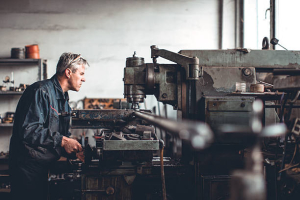
What is Fabrication?
Fabrication or also known as metal fabrication, refers to the process of constructing metal parts and structures from raw materials. It encompasses a variety of operations like cutting, welding, bending, and assembling to create a final component. Unlike presswork, which is typically automated, fabrication can be both manual and automated depending on the complexity of the part.
Common fabrication techniques include:
- Cutting: This involves using machines like laser cutters, water jets, and plasma cutters to shape metal sheets or plates.
- Bending: Metal is bent to specific angles using tools like press brakes or roll formers.
- Welding: This involves joining two or more metal pieces using heat or pressure, forming a strong bond.
- Assembly: After individual parts are fabricated, they are assembled into a final product, often with additional fasteners or adhesives.
Fabrication is ideal for producing more complex parts, custom designs, or low-volume orders. It’s highly versatile and is used for everything from structural components like beams and frames to intricate machine parts.
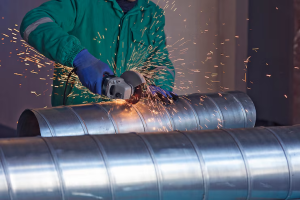
Presswork vs. Fabrication: Key Differences
While both presswork and fabrication are used to manufacture metal parts, the main differences between them lie in the process, complexity, and cost. Here’s how they compare:
1. Complexity of Parts
- Presswork: Typically used for producing simpler, repeatable parts like washers, brackets, and flat components. Presswork is ideal for creating identical parts in bulk.
- Fabrication: Suitable for more complex and customized parts, including those with intricate designs, bends, or welds. Fabrication can accommodate custom designs that may not be possible with presswork.
2. Volume of Production
- Presswork: Best for high-volume production runs. The more parts you need, the more cost-effective and efficient the presswork becomes, as it can be automated for consistency and speed.
- Fabrication: While fabrication can be used for high-volume runs, it is especially beneficial for low-volume or prototype runs. It’s perfect for producing custom or one-off parts.
3. Material Types and Thickness
- Presswork: Works well with thin metal sheets and soft to medium-strength materials like mild steel, aluminium, and copper.
- Fabrication: Suitable for a wider range of materials, including thicker metals, alloys, and materials that require more specialized treatment (like stainless steel or titanium).
4. Precision
- Presswork: Offers high precision in mass production with tight tolerances, particularly when using progressive or compound dies.
- Fabrication: Also offers precision, especially in CNC machining and laser cutting, but the level of precision depends on the complexity of the design and the technique used.
5. Speed and Cost
- Presswork: Very fast and cost-effective for high-volume production. The automation involved leads to quick turnaround times and lower costs per part.
- Fabrication: While it may take more time and effort, fabrication is more adaptable and can produce parts that cannot be made through presswork. However, it tends to be more expensive for mass production than presswork. Read in more detail about what factors make a difference in metal fabrication costs.
When to Use Presswork?
Presswork is the go-to method when you need to produce high volumes of identical parts quickly and efficiently. Here are some scenarios where presswork is ideal:
- High-Volume Production: If you need large quantities of parts with simple shapes, such as washers, brackets, or fasteners, presswork is the most efficient choice.
- Simple Parts: If your design involves simple cuts, bends, or shapes, presswork is a fast, cost-effective solution.
- Automotive and Electronics Manufacturing: Presswork is commonly used in industries like automotive manufacturing, where consistent, high-volume parts are required.
When to Use Fabrication?
Fabrication is the best choice when your project requires complex, custom parts, or when you’re working with thicker materials or smaller production runs. Here are some scenarios where fabrication is ideal:
- Custom Parts: If you need a unique part or a one-off design, fabrication allows for more flexibility and customisation.
- Prototype Production: Fabrication is excellent for prototyping because it allows for easy modifications and quick adjustments to designs.
- Thicker Materials: When working with thicker metals or specialised materials, fabrication provides the versatility to handle a wide range of materials.
- Complex Assemblies: If your part requires multiple components that need to be joined together through welding, riveting, or other assembly techniques, fabrication is the way to go.
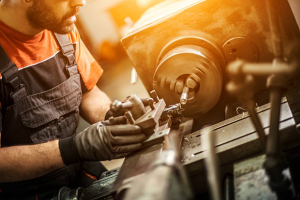
Get Your Custom Quote for Metal Presswork and Fabrication Services at Kirmell Ltd!
At Kirmell Ltd, we offer a comprehensive range of presswork, fabrication, and machining services that cater to a variety of industries. Whether you’re producing high-volume parts for the automotive industry or need custom, complex parts for a unique project, we’ve got you covered.
Our Metal Presswork Services:
- High-Speed Production: We use advanced mechanical and hydraulic presses to produce parts with tight tolerances and high efficiency.
- Custom Dies: Our in-house die design and manufacturing ensure that your parts are shaped with precision and consistency.
- Wide Material Range: We can handle a variety of materials, including mild steel, aluminium, and brass, to meet your project’s specific requirements.
Our Fabrication Services:
- Precision Cutting and Bending: Using advanced laser cutting, CNC machining, and press brakes, we create custom components with high accuracy.
- Welding and Assembly: We offer welding services such as MIG, TIG, and spot welding, as well as assembly services to bring your custom parts together.
- Prototype Production: Whether you need a one-off part or a small batch, our fabrication services are ideal for low-volume production.
Machining Services:
- CNC Machining: We provide CNC machining services for high-precision parts, ensuring tight tolerances and repeatability.
- Complex Components: Our advanced machining capabilities allow us to create intricate parts with multiple features and geometries.
At Kirmell Ltd, we integrate presswork, fabrication, and machining to offer a seamless solution for all your metalworking needs. Whether you require simple parts or highly complex components, we deliver high-quality results on time and within budget. Contact us now to get a quote.
Conclusion
Choosing between presswork and fabrication comes down to the type of part you need, the production volume, and the complexity of the design. Presswork is ideal for high-volume, cost-effective production of simple parts, while fabrication is more suitable for custom, complex, or low-volume runs. Understanding the key differences between these two processes will help you make an informed decision for your project.
At Kirmell Ltd, we provide both presswork and fabrication services, combining these methods with machining to offer comprehensive solutions for any manufacturing need. Contact us today to discuss your project and discover how our services can help bring your designs to life.

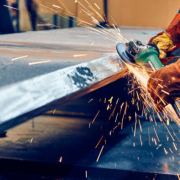
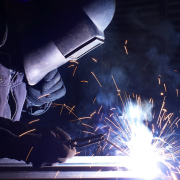
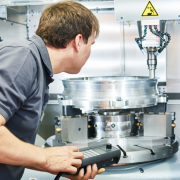
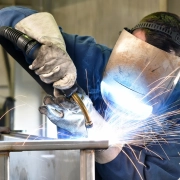
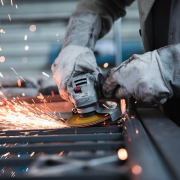
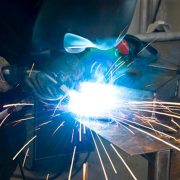
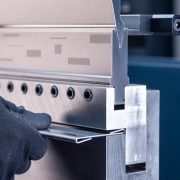
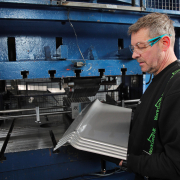



Leave a Reply
Want to join the discussion?Feel free to contribute!